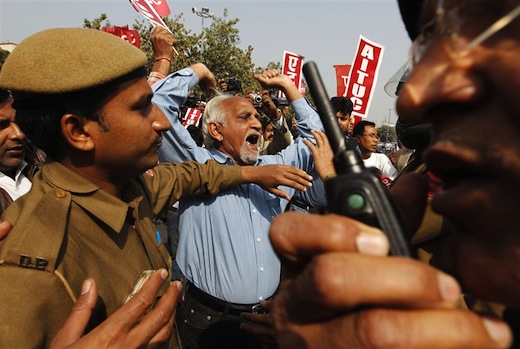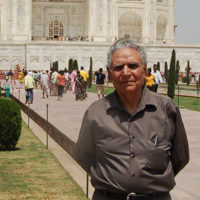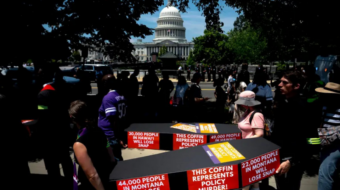
In the largest general strike since India’s independence, millions of workers went on strike Feb. 28 for stronger labor laws and to protest the rising cost of living. All 11 national labor federations plus 5,000 unaffiliated unions participated. This included labor federations associated with the ruling Congress party.
“This a historic occasion as for the first time all the major trade unions irrespective of political affiliations are coming together to protest anti-labor polices of the government,” said Gurudas Dasgupta, president of AITUC, the largest of the left-affiliated trade unions and a member of Parliament.
The novelty of the situation is that ruling party’s trade union federation, INTUC, and the main opposition rightist party’s union affiliate, BMS, jointly served a strike notice in December to the government for a joint action with left-led unions. Some estimated the total number at 100 million workers who went on strike.
Inflation in India is sky high. Unemployment is widespread. Employers violate at will labor laws. The income level of working families is declining.
At the same time, industrialists’ private profits are growing and this is touted as the economic growth of India.
The other side of that “growth” is the working class bears the pinch. So in an unprecedented display of working-class unity, workers demanded job security, tougher labor laws, price control and a robust role of the public sector in employment and social security.
Public sector employees are represented by unions in sectors such as banking, insurance, defense, telecommunications, electricity and power utilities, along with teachers.
In India, as in many other countries, unions are affiliated with political parties. There is a large chunk of the working class that is unaffiliated and unorganized. But even nonunion workers joined their brethren in joint picketing actions, mass rallies and street marches in every state of India.
In the state of West Bengal, where Communists lost the elections last year to a rightist party, the new chief minister of the state vowed to crush the strike, despite her using strikes against the former left-led government. She threatened government workers with a “break in service,” which would mean their seniority would be wiped out along with their pensions and other benefits.
However the union associated with her party’s main ally was a leading segment of the strikers.
Bank employees evoked a total response. All India Bank Employees Union General Secretary Vishwas Tyagi said even private sector bank employees, where the union has no membership, went on strike. The country’s financial center, Bombay, was affected even after warnings from the chamber of commerce to keep away from “this political agenda.”
It is estimated that the strike cost industrialists the equivalent of $2 billion.
In a last ditch effort to avoid the strike, India’s prime minister made an appeal to the unions to desist from the industrial action just two days before the strike date. Unions responded that they gave notice of the action two months before and they could get a response only two days before was much too late.
Along with the economic impact is the political one. The Congress-led government is in real difficulty. Currently elections in five states assemblies are being held, where the ruling party is likely to loose.
In a joint press statement, the unions’ leadership warned the federal and state governments that the strike is a ” signal that the working people and their trade unions would no way accept such indifference and neglect and carry forward the struggle to a higher pitch if their basic demands are not addressed by the government through concrete remedial action.”
Photo: Strikers protest high prices and violations of labor laws in New Delhi. (AP/Saurabh Das)










